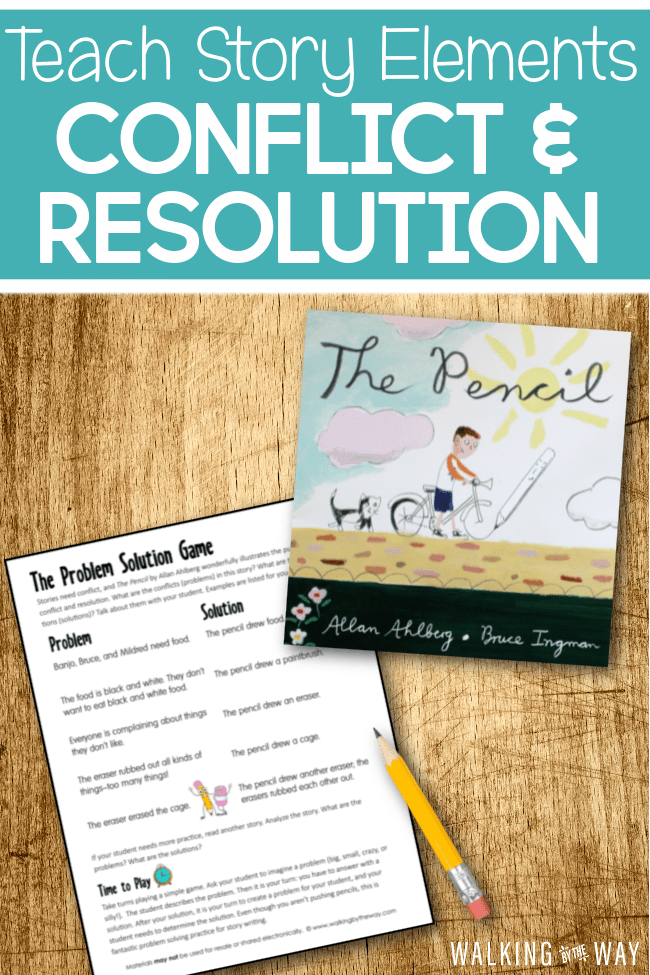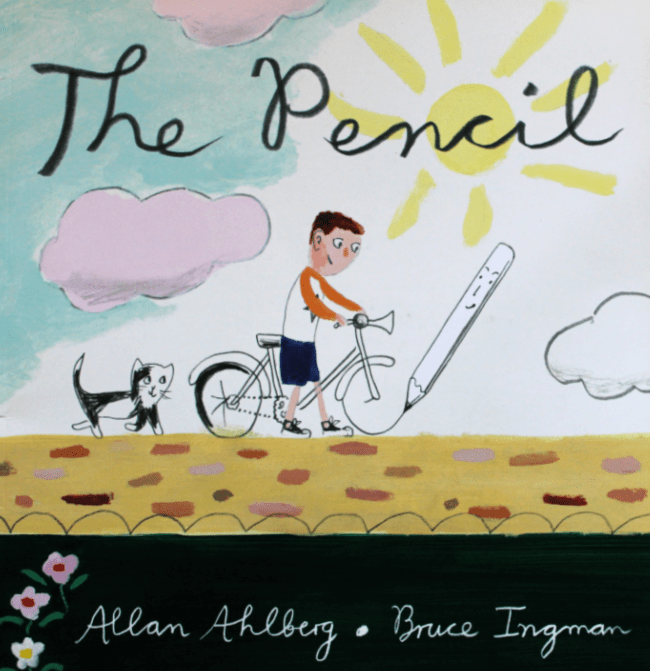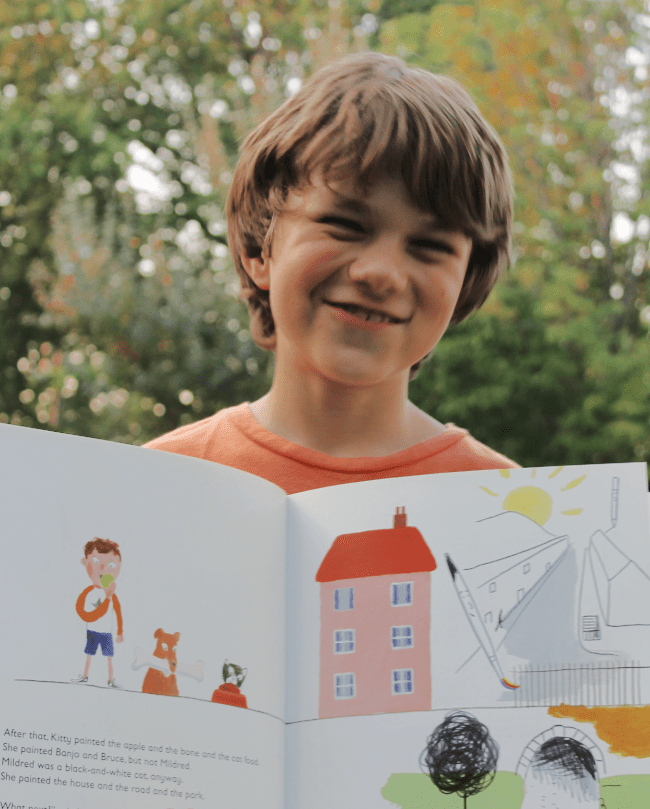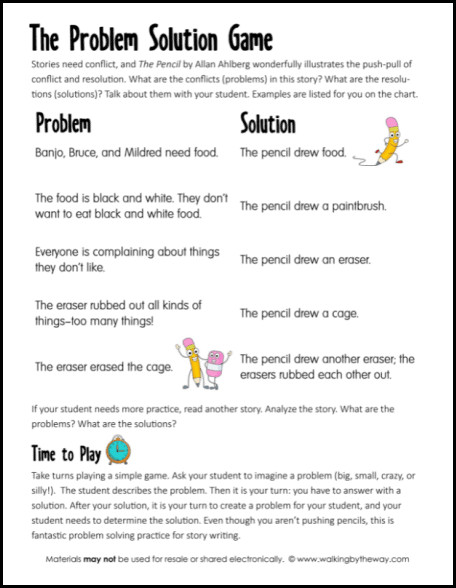Stories need conflict, and The Pencil by Allan Ahlberg wonderfully illustrates the push-pull of conflict and resolution.

You can easily use this book to teach elementary students about conflict and resolution as story elements.

Conflict and Resolution Lesson Plan
Discuss conflict with your student. What is conflict? Why is it a story element?
Conflict is a struggle between two opposing forces. It is a problem.
What is a resolution?
Resolution is when the conflict is resolved. It is how the problem is solved.
To simply illustrate this concept, you can talk about conflicts among siblings or pets or even humans and inclement weather.
Emphasize why stories need these elements.
Read The Pencil to your students.

What are the conflicts (problems) in this story? What are the resolutions (solutions)? Talk about them with your student.
Here are a few of the examples from The Pencil by Alan Ahlberg.
Problem: Banjo, Bruce, and Mildred need food.
Solution: The pencil drew food.
Problem: The food is black and white. Banjo, Bruce, and Mildred don’t want to eat bland food.
Solution: The pencil drew a paintbrush to add color to the food.
Problem: Everyone is complaining about things they don’t like.
Solution: The pencil drew an eraser.
What other problems and solutions are included in the story? Discuss.
If your student needs more practice, read another picture book such as Fortunately by Remy Charlip. Recall and analyze the conflicts and solutions.
Conflict and Resolution as Story Elements Game
Once your student understand the concepts of conflict and resolution, take turns playing a simple game.
Ask your student to imagine a problem (big, small, crazy, or silly!). The student describes the problem. Then it is your turn: you have to answer with a solution.
After your solution, it is your turn to create a problem for your student, and your student needs to determine the solution.
Even though you aren’t pushing pencils, this is fantastic problem solving practice for story writing. If you want, you could turn it into a writing activity by asking the student to write down the problems and solutions.
If you are teaching a large class, one person can create a conflict and everyone else in the class can write down their solutions. Students can take turns reading their solutions to the class.

If you’d like a handy printable for this lesson, you can download one here.
More Creative Writing Lessons for Elementary Students
If you are searching for more creative writing lessons for elementary students, try this page.

Leave a Reply